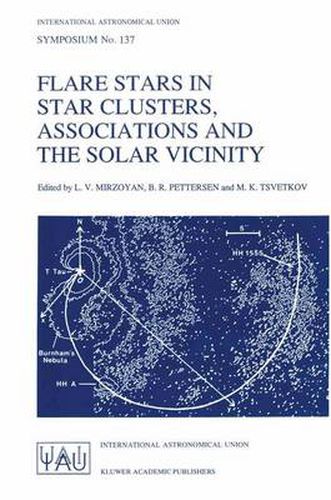Readings Newsletter
Become a Readings Member to make your shopping experience even easier.
Sign in or sign up for free!
You’re not far away from qualifying for FREE standard shipping within Australia
You’ve qualified for FREE standard shipping within Australia
The cart is loading…






This title is printed to order. This book may have been self-published. If so, we cannot guarantee the quality of the content. In the main most books will have gone through the editing process however some may not. We therefore suggest that you be aware of this before ordering this book. If in doubt check either the author or publisher’s details as we are unable to accept any returns unless they are faulty. Please contact us if you have any questions.
Stellar flares represent one of the most challenging problems of contemporary astrophysics. Both solar and stellar observations have shown the flare phenomenon to be very complex, and in recent years important progress has been made from simultaneous observations over wide wavelength ranges. Some similarities exist between solar and stellar flares, but im portant differences have also been established. Such topics, as well as theoretical aspects, were discussed in detail at the Palo Alto IAU Colloquium No. 104, Solar and Stellar Flares, in 1988. Another approach to the study of stellar flares is through observations of flare stars in physical systems. The possibility of detecting flare stars in star clusters and associations with wide angle telescopes have allowed observations of systems with quite different ages. The classical works of G. Haro and V. A. Ambartsumian demonstrated the evolutionary nature of the flare phenomenon. Flares occur at the earliest stages of dwarf star evolution. The photographic observations of flare stars in systems of different ages turned out to be significant not only for the evolutionary study of flare stars, but also for the study of their physical nature. This observational fact was conditioned by very large diversity of flare star luminosities, i.e. of scales of flares produced by them and by peculiarities of stellar flares observed in star clusters and associations.
$9.00 standard shipping within Australia
FREE standard shipping within Australia for orders over $100.00
Express & International shipping calculated at checkout
Stock availability can be subject to change without notice. We recommend calling the shop or contacting our online team to check availability of low stock items. Please see our Shopping Online page for more details.
This title is printed to order. This book may have been self-published. If so, we cannot guarantee the quality of the content. In the main most books will have gone through the editing process however some may not. We therefore suggest that you be aware of this before ordering this book. If in doubt check either the author or publisher’s details as we are unable to accept any returns unless they are faulty. Please contact us if you have any questions.
Stellar flares represent one of the most challenging problems of contemporary astrophysics. Both solar and stellar observations have shown the flare phenomenon to be very complex, and in recent years important progress has been made from simultaneous observations over wide wavelength ranges. Some similarities exist between solar and stellar flares, but im portant differences have also been established. Such topics, as well as theoretical aspects, were discussed in detail at the Palo Alto IAU Colloquium No. 104, Solar and Stellar Flares, in 1988. Another approach to the study of stellar flares is through observations of flare stars in physical systems. The possibility of detecting flare stars in star clusters and associations with wide angle telescopes have allowed observations of systems with quite different ages. The classical works of G. Haro and V. A. Ambartsumian demonstrated the evolutionary nature of the flare phenomenon. Flares occur at the earliest stages of dwarf star evolution. The photographic observations of flare stars in systems of different ages turned out to be significant not only for the evolutionary study of flare stars, but also for the study of their physical nature. This observational fact was conditioned by very large diversity of flare star luminosities, i.e. of scales of flares produced by them and by peculiarities of stellar flares observed in star clusters and associations.